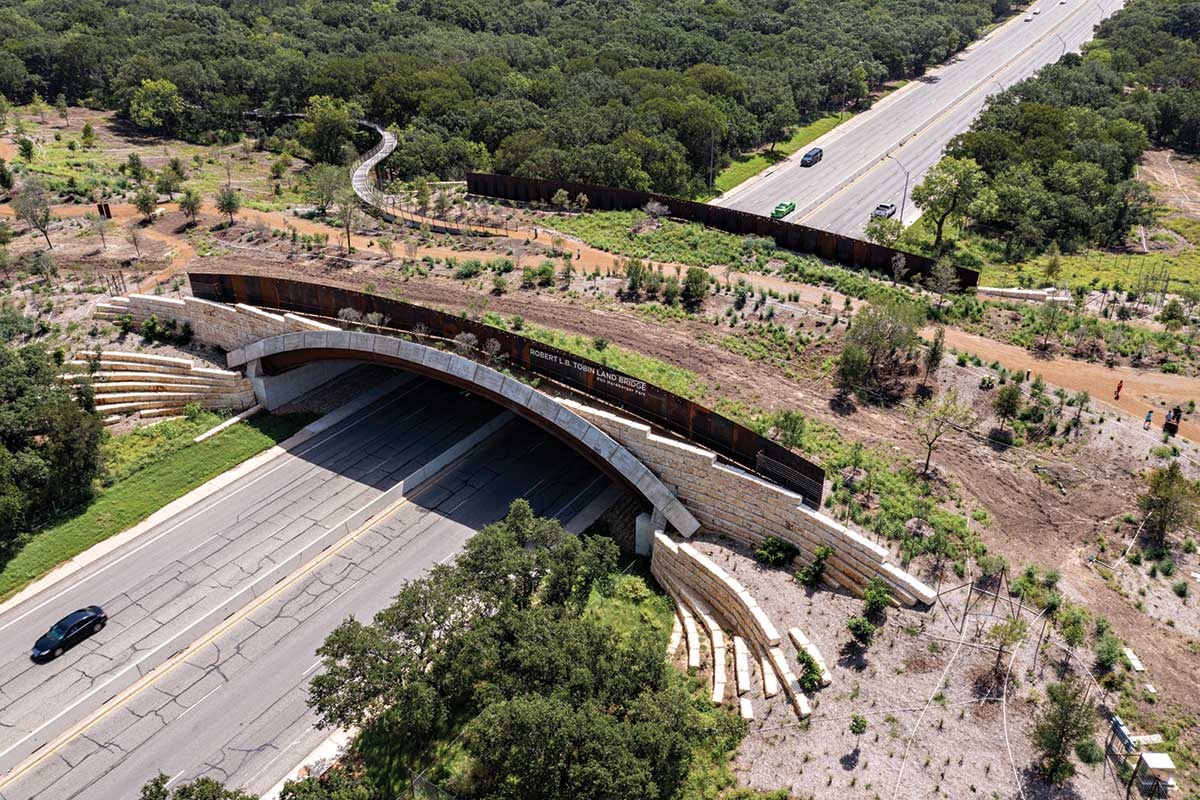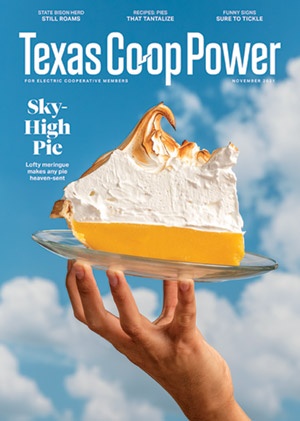A Virginia opossum has strolled across. So have white-tailed deer, cottontail rabbits, and even a coyote or two. All are finding safe passage over a busy roadway thanks to a new land bridge that reclaims important wildlife habitat by connecting two wooded sections of a popular San Antonio park.
Less than a year after its official opening in December 2020, nighttime photos offer evidence that the Robert L.B. Tobin Land Bridge has already provided a safe crossing for wildlife that inhabit both sides of the 330-acre Phil Hardberger Park in north-central San Antonio.
Built over a section of the six-lane Wurzbach Parkway, the land bridge is the largest crossing in the United States built specifically for both wildlife and humans, according to the San Antonio Parks and Recreation Department.
“This bridge is important because the city is so fragmented, animals don’t have a lot of places to go anymore. And they definitely need some space,” says Casey Cowan, parks naturalist for the department. “This bridge literally gives them more land to use and to move their genes around. It helps increase the diversity of the ecosystem.”
Cowan notes that wild animals need food, water, shelter and space to survive, but increased urbanization is making it harder for animals to access those essentials. “Having these wildlife corridors like the land bridge, greenways and greenbelts makes it easier for animals to reach those necessities,” she says.
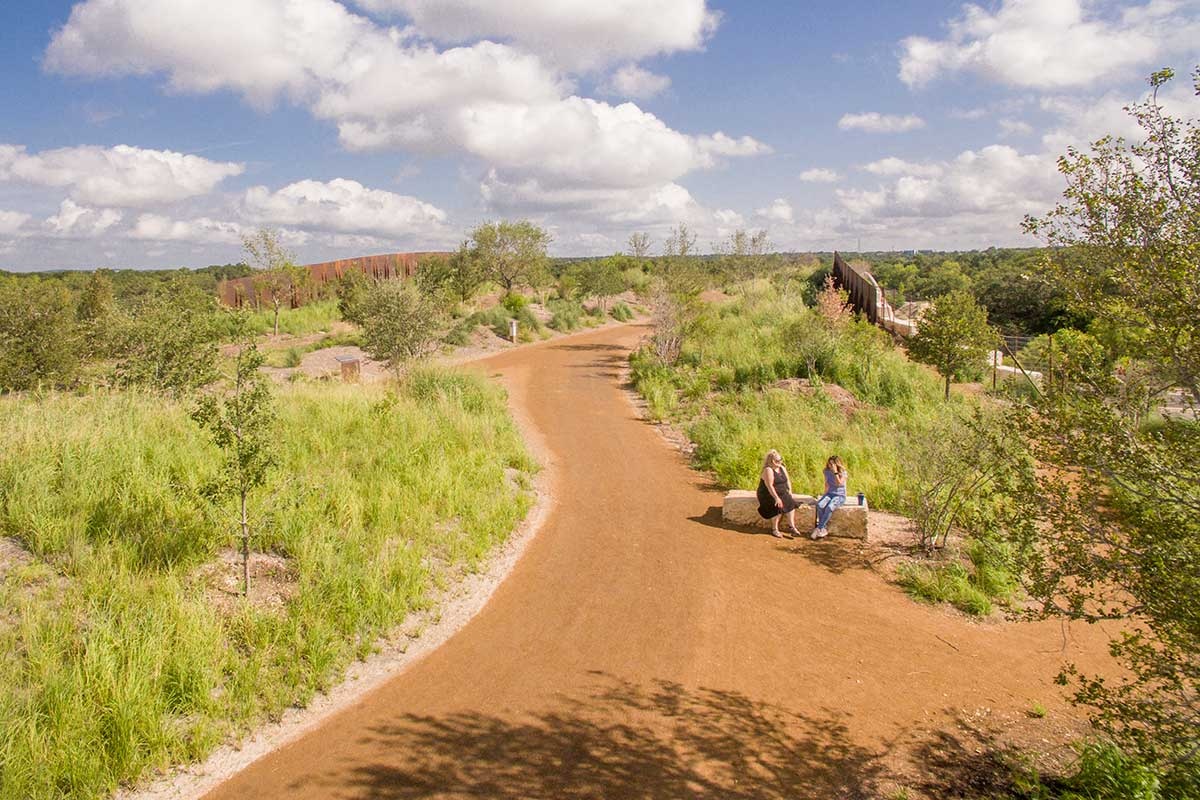
Web Extra: The land bridge provides a safe crossing for wildlife that inhabit both sides of the 330-acre Phil Hardberger Park in north-central San Antonio.
Justin Moore, Texas By Air | Courtesy City of San Antonio Parks and Recreation Department
Incorporating wildlife habitat conservation into transportation projects is becoming more of a priority in Texas and other parts of the country, says Laura Zebehazy, head of the Texas Parks and Wildlife Department’s Wildlife Habitat Assessment Program. Her staff reviews Texas Department of Transportation projects and provides recommendations on how to minimize or avoid impacts to natural habitats.
Land crossings can provide immediate benefits to wildlife, as seen in the photos of creatures traversing San Antonio’s bridge, Zebehazy says.
“[A land bridge] is a good thing to have in our toolbox, and it has proven to have a positive effect,” she says. Bridges also help improve safety for humans by helping to reduce collisions between vehicles and animals.
Hardberger Park has been an outdoor haven for visitors for more than a decade, but it was divided by Wurzbach Parkway. The land bridge is about a quarter-mile long, 150 feet wide at the top and 165 feet at the bases, allowing enough room for wildlife and people to cross safely.
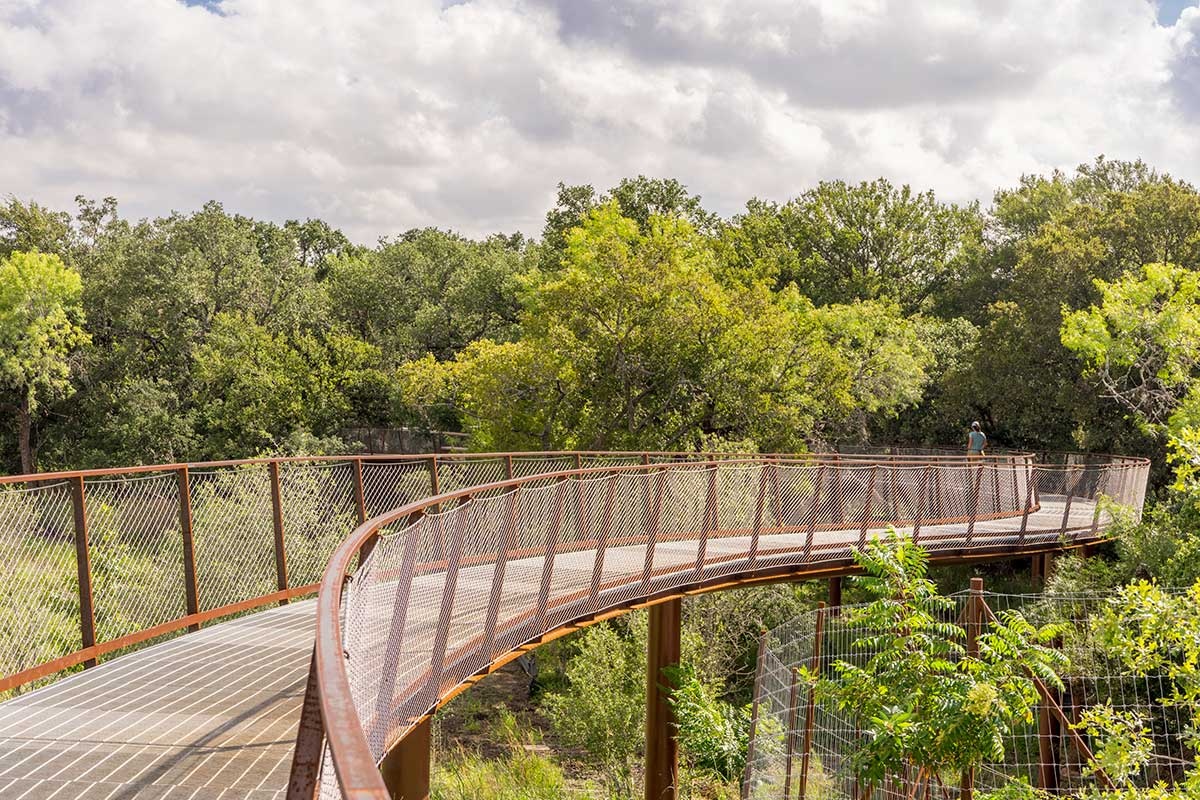
Web Extra: The land bridge is the largest crossing in the United States built specifically for both wildlife and humans.
Justin Moore, Texas By Air | Courtesy City of San Antonio Parks and Recreation Department
When users walk up the gentle slope, the only evidence of the traffic below is noise that is intentionally muffled by the bridge’s design. The bridge was designed to Americans With Disabilities Act specifications, as are other trails in the park. Bicycles are allowed but must be walked across the bridge.
The area is landscaped with native plants and trees that offer natural beauty and protective shelter for animals. There is a rainwater collection system and two water bubblers, located on either side near wildlife blinds, that provide animals with water year-round.
The parks and recreation department is conducting a five-year study to determine how wildlife use the bridge. More animals are expected to make the hike as the vegetation grows, creating a more natural habitat.
“I’m amazed at the success of it at this very early state,” says Jim Gray, principal at Rialto Studio in San Antonio, the project’s lead landscape architect. “It’s been a huge success for parkgoers, and people seem to really be enjoying it. But the bigger success is the fact that wildlife is already taking advantage of it. And as it becomes more of a natural space, I think it’s just going to get better and better.”
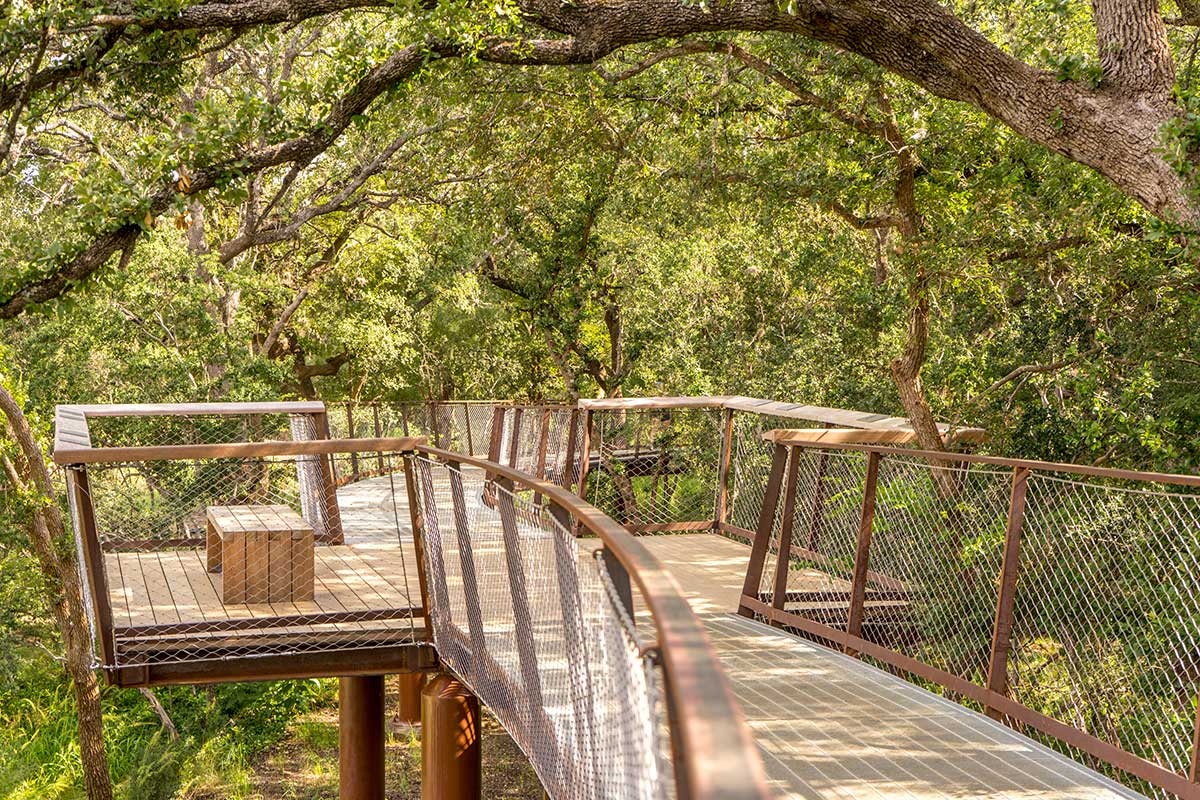
Web Extra: The $23 million bridge was financed by a 2017 municipal bond and donations and grants.
Justin Moore, Texas By Air | Courtesy City of San Antonio Parks and Recreation Department
Erin Christie of San Antonio and Trenton Taylor of Schertz made their first trip across the bridge on a hot, sunny Sunday afternoon in June. They crossed with their dogs, Hazel and Millie.
“I really like the land bridge, and once everything grows, it’s going to be really nice,” says Taylor, whose dog, Hazel, cooled off by burrowing into some dirt under the trees. “This is a big improvement compared to how it used to be.”
Christie, who recently moved back to San Antonio, plans to return to the bridge. “I loved it, I really did. I can’t wait to come back and watch it grow,” she says. “Millie and I do a lot of exploring, and I think this one is going to be one of our favorites.”
Loss of habitat is a major threat to wildlife in Texas, says Ben Jones, executive director of the Texas Conservation Alliance, a state affiliate of the National Wildlife Federation.
“Anything we can do to preserve, reclaim, protect and re-wild their habitat is important,” Jones says. “This bridge is a real win.”
The land bridge cost $23 million, with the funds coming from donations, grants and a 2017 city bond. But there are smaller, less expensive ways to help protect wildlife habitat and corridors, Jones says.
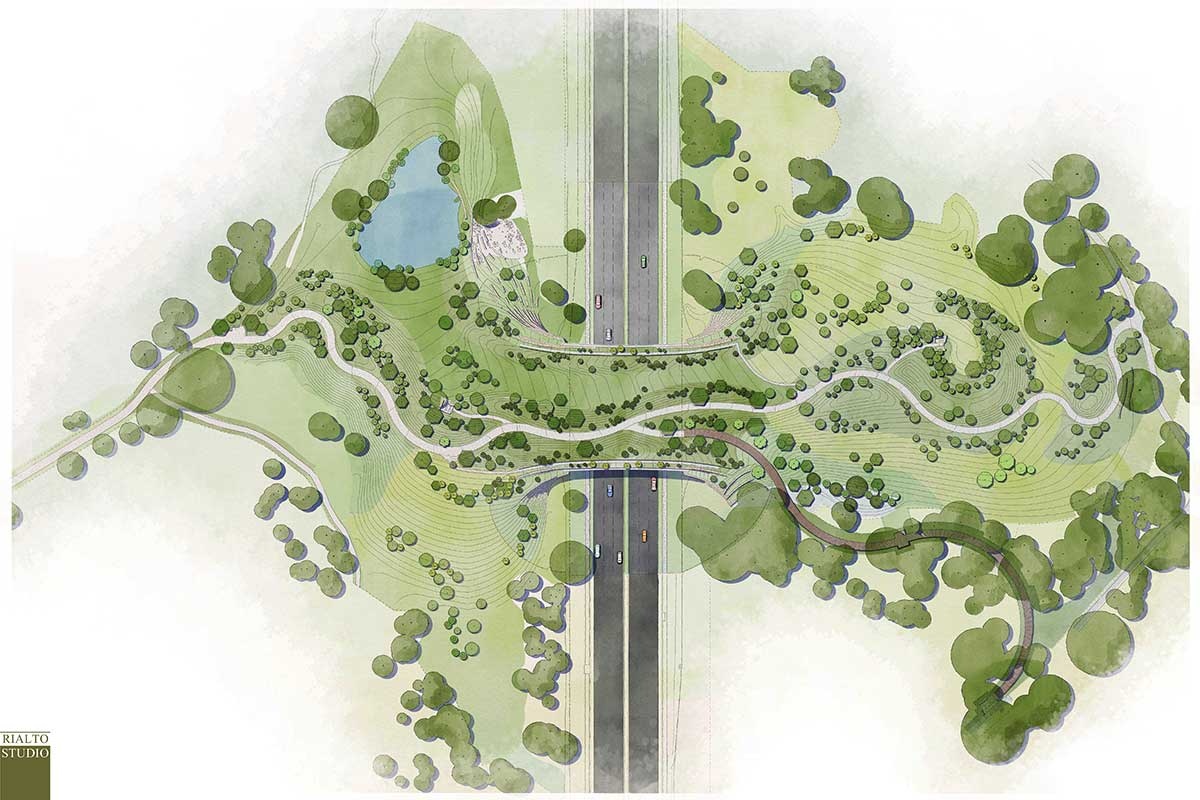
Web Extra: The bridge is about a quarter-mile long, 150 feet wide at the top and 165 feet at the bases, allowing enough room for wildlife and people to cross safely.
Justin Moore, Texas By Air | Courtesy City of San Antonio Parks and Recreation Department
Culverts also can help wildlife safely cross roadways and avoid accidents with vehicles. Drivers can exercise caution, especially at night, in areas where there are concentrations of wildlife. Building owners in migratory bird paths can turn off their lights at night during spring and fall migrations. Everybody can use native plants and trees to provide shelter and food to wildlife.
“The loss of habitat is increasing,” Jones says. “Wildlife are in trouble, and any action people can take to help save them is critical.
